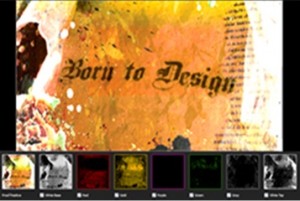Limited time offer! Get up to 20% Off on all services! Order Now
X
BLOGS

Let’s talk about Simulated Process Art Work.
Welcome To Cora’s Corner, where I am going to help you with your artwork issues.
Even though Simulated Process screen printing has been around for a long time, there are still a lot of people with lots of questions about what it is, why should they should use it and how to create and print it?
SIMULATED (SPOT) PROCESS: Refers to a method of printing that uses halftone dots like Four Color Process, but uses a certain set of opaque spot colors to produce the image on the garment. This method works best on black, and darks, and well on white and light garments. The benefits of using this method is a brighter, consistent, cleaner, softer, and more durable print. Because this method uses halftones, it is resolution dependent. Use 150 dpi if image only, 200-300 dpi if text is involved.
 Just for comparison reference; CMYK (Four Color Process) COLORS: Refers to a method of printing with four translucent inks (cyan, magenta, yellow and black) to produce all other colors. Multiple colors are made by printing halftone dots of one color over the halftones dots of another color in various degrees (rosette pattern) depending on what color needs to be produced. This type of printing is common when the designs has many colors or is photorealistic. This method is not suited for dark garments so another method has been created for printing on dark garments, Simulated Process.
Just for comparison reference; CMYK (Four Color Process) COLORS: Refers to a method of printing with four translucent inks (cyan, magenta, yellow and black) to produce all other colors. Multiple colors are made by printing halftone dots of one color over the halftones dots of another color in various degrees (rosette pattern) depending on what color needs to be produced. This type of printing is common when the designs has many colors or is photorealistic. This method is not suited for dark garments so another method has been created for printing on dark garments, Simulated Process.
 When you have a raster image (Photoshop file, CorelPhoto Paint or Painter file, scanned imaged, digital photograph, or any raster image file (jpeg, TIFF, etc.)
When you have a raster image (Photoshop file, CorelPhoto Paint or Painter file, scanned imaged, digital photograph, or any raster image file (jpeg, TIFF, etc.)
 Simulated Process will provide you outstanding separations. You can even combine these separations with vector elements in your Illustration program and go crazy designing and outputting great designs that will easily print on press. To make the best use of Simulated Process you should understand when to use it so you get the very best end result. If a file was completely built in an Illustration program such as Adobe Illustrator or Corel Draw and the number of spot colors does not exceed your press capabilities or the customer’s budget then you should use the separation ability built in the same Illustration program, because, solids will remain as solids and gradients/tints will print as halftones. Typography and other vector elements will be clean and sharp. Illustration programs exist for exactly this purpose. When your illustration exceeds your press capability or is a raster image (like mentioned above), then Simulated Process will develop a controlled set of colors allowing for a highly colored art file to fit your press and look great. The art file will print as halftones as that is the nature of tonal image separations.
Simulated Process will provide you outstanding separations. You can even combine these separations with vector elements in your Illustration program and go crazy designing and outputting great designs that will easily print on press. To make the best use of Simulated Process you should understand when to use it so you get the very best end result. If a file was completely built in an Illustration program such as Adobe Illustrator or Corel Draw and the number of spot colors does not exceed your press capabilities or the customer’s budget then you should use the separation ability built in the same Illustration program, because, solids will remain as solids and gradients/tints will print as halftones. Typography and other vector elements will be clean and sharp. Illustration programs exist for exactly this purpose. When your illustration exceeds your press capability or is a raster image (like mentioned above), then Simulated Process will develop a controlled set of colors allowing for a highly colored art file to fit your press and look great. The art file will print as halftones as that is the nature of tonal image separations.





